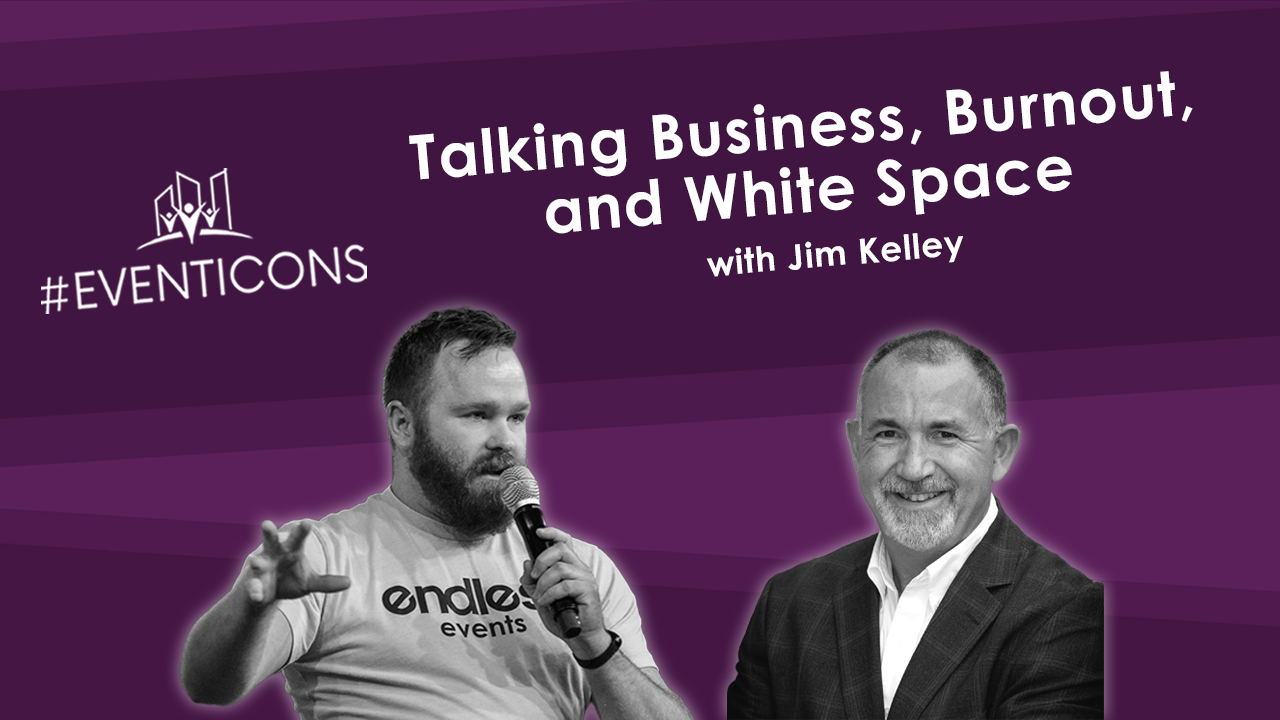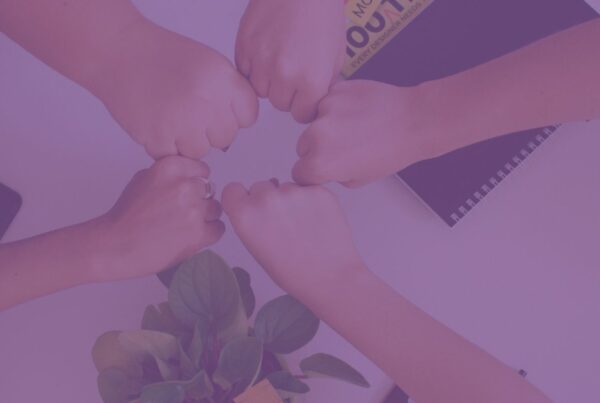Throughout 2022, we discussed how event professionals could talk business and engage with the C-suite. We also talked about trends we witnessed and expected to see in 2023. That’s why we’ve brought Jim Kelley on today’s episode of the #EventIcons.
Jim is an experienced leader in the events industry. Currently the Vice President of Marketing and Industry Relations at Fern Expo, he has a long history of working in events, tradeshows, and conferences. Jim describes himself as a continuous learner, trusted advisor, innovator, educator, and ukulelist in training. Today, he’ll share his background, how event professionals can take on the business world, how to avoid burnout, and why we’ll see more white space in 2023.

How Jim Came to Events
Before moving into the heavy topics on today’s agenda, Will asks Jim to share how he ended up in the events industry.
“I think it started in college,” says Jim. “I was active in student government and got on the campus activities board. I thought I wanted to do student life and went to work on my master’s. I graduated off-cycle, meaning I graduated in December. There were no jobs in December. So I moved home to Baltimore, and a good friend of mine was working at the Hyatt Regency. They needed help, and I ended up working there in convention services. I spent some years there. A company named Andrews Bartlett recruited me to open their Baltimore office. 30 Years later, here I sit.”
Event Professionals: Detail Orientation vs. Business Orientation
Over on the Event Brew podcast, we’ve talked about communication with the C-suite as a means to protect against layoffs and establish your ability. Jim brings us back to these points with his unique experience and wisdom: event professionals should be pushing their way into conversations they’re not currently included in.
“You and I nerd out a lot on strategy,” says Will. “I think we share the same belief of event professionals getting stuck being the event planner and being 3 levels down in terms of the totem pole within a company. Can we dive into how event professionals should interact with a C-level executive?”
“I recall the context of our conversation, and my comment was less about acquiescing to the C-suite and more about driving your way into the C-suite. What we do as event professionals has a significant impact on the strategy of organizations,” explains Jim. “For most associations, events are the single largest gathering for stakeholders. They’re a big deal. I think we sometimes get caught up in the event professional part, and we need to lean more on the business professional part.”
Interested in this last point, Will asks for more details. “Why do you think we’re so afraid to move into the business side of things as event professionals?”
“When you think about an event professional, there’s probably a high level of detail orientation and less of a goal orientation. The event professionals I know cross their t’s and dot their i’s, but sometimes you can get so granular that you’re not looking 2 or 3 years out from a business perspective.”
But, as Jim points out, there is a shared responsibility to consider the long-term goals of an organization. Often, organizations only share plans regarding the next event they want to plan, not their long-term goals.
For example, “I was just having a conversation with a client, and I said, ‘I’m interested in what you’re doing next year, but I want to know where you want to be as an organization 3 or 4 years from now.’ As event professionals, we need to understand where the business is going in the next 3 to 5 years because I may be able to implement things that can help that.”
Dealing with Burnout
Next, Will takes us to something everyone can relate to, post-pandemic burnout. “We’re getting out of the pandemic, and all this change is happening,” says Will. “I sense that, within the events industry, everyone feels at least a little bit burnt out. Let’s say you’ve reached this point in your career where you know what you need to know, and you know you need to grow, but you’re burnt out. What would you say to someone like that?”
Jim emphasizes how vital communication with your employer is. “The first thing I would do is talk to the organization you’re with and say you’re feeling burnt out. Two people I know in the DC market have done that. Both of their organizations gave them sabbaticals. Those organizations essentially said, ‘We value you and want you to evaluate your decisions with a clearer head.’”
“I also think sometimes it just might require a change of scenery,” continues Jim. “If you feel there’s nowhere to go, no growth opportunities or relief, you must do what’s best for yourself. Otherwise, you will not be good to your employer, stakeholders, family, or loved ones. You also run the risk of damaging your reputation and doing physical harm to yourself.”
A 2023 Trend: Creating White Spaces
Turning to current trends, Will wants to know what trends Jim thinks we can expect in 2023. “You saw my 2023 trends presentation. If you had to pick one trend you think will hit the events industry, give me the one you think no one is thinking about.”
“I don’t know if it’s a trend, but I think there is going to be a lot more focus around how we can create events where there’s white space to allow people to connect,” says Jim. “I don’t think you’re going to see an event that has people scheduled from 7:30 am to 5:30 pm with a reception that starts at 6 o’clock. My thinking is you’re going to see white space by design. What happens when you build that white space in by design? People become more engaged.”
Will agrees, as an attendee, only having short breaks in a long day prevents him from making meaningful connections like he otherwise would on a 2-hour lunch break. “I think that’s so smart. I think we get obsessed; if we have a 3-day event, we need to stuff all 3 days and jam as much into it as possible. But I’m a big advocate of simplifying events. Let’s have less content and more whitespace. Sometimes it feels like we’re trying to over plan events.”
Jim points out that a packed 12-hour day isn’t what your average day looks like. “You don’t get up at the crack of dawn to get to a 7:30 breakfast and be fully engaged every day. To attend things all day, be fully intellectually engaged, go to a reception, and be ‘on’ for 10 to 14 hours, you don’t do that in your normal day. It just doesn’t add up.”
Jim’s Final Advice:
Finally, as a custom on #EventIcons, Will asks Jim about his favorite resources. “To wrap up, I want to go into my last questions. What are your favorite resources?”
“I’m a keynote junky,” says Jim. “I love a good keynote; I don’t know why. PCMA is coming up in January, and I’ll probably leave there and order books from the three or four keynotes they have. That’s kind of where I get my library from.”
He also listens to podcasts. “I just listened to a podcast from Simon Sinek, and I ordered the book following the podcast. The other thing I listen to is Bourbon Pursuit. One of the things I take away is their focus on community. Often I’ll listen to that and draw parallels to what we’re doing as an industry and community. We’re lifting people up and trying to help new people. I see posts all the time saying, ‘I’m new to bourbon. What three should I try?’ And no one says, ‘Ugh. You’re a rookie.’ It’s all about building people up.”
And Jim’s final tip for the day is: “Believe in yourself. Surround yourself with people who believe in you. If you do that, there’s no stopping you.” We hope you enjoyed today’s episode with Jim Kelley. Tune in next time for another iconic guest!








